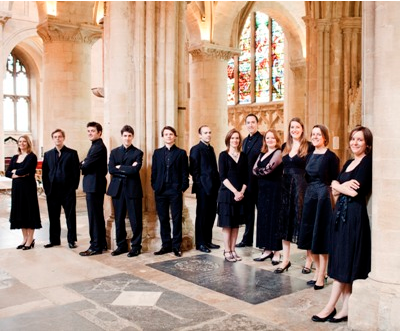The project of a particular kind of art is to instantiate in itself what is missing elsewhere. Benjamin Britten’s War Requiem (being performed again by Seattle Symphony on June 15) begins with a low growl and then the tolling of bells as it puts into yoke two incompatibilities: war and requiem. It had its premiere in 1962, at the consecration of the new Coventry Cathedral — the 14th-century version had been reduced to its walls in a German bombing raid in 1940.
Britten’s War Requiem doesn’t recreate the cathedral as a bulwark of serenity, but as a frail structure ripped open, shot through with booming bursts and siren lamentation. It’s a work with many moving parts: the traditional Mass for the dead, in Latin, glossed by nine poems in English from World War I poet Wilfred Owen. The Latin is sung by a choir, boys’ choir, and a solo soprano — in Seattle, Seattle Pro Musica bolsters the forces of the Seattle Symphony Chorale, with the youthful voices of the Northwest Boychoir, conducted by Joseph Crnko, and soprano Christine Brewer.
The tenor and baritone soloists — here, Anthony Dean Griffey and Ivan Ludlow — sing accompanied by a chamber orchestra (the principals often fearlessly exposed), almost as if they were singing art songs. They join conductor Ludovic Morlot near the front of the stage, while Brewer sings from a raised position in the back, just in front of Benaroya’s majestic pipe organ. The boys’ choir, perched up in a box, house-left, to approximate the effect of eerie distance that Britten hoped for, is also sometimes accompanied by an organ.
With the aid of Owen’s poetry, Britten interrogates, peremptorily, the promise of eternal, peaceful rest: the naiveté in boys’ prayer for “requiem aeternam,” is followed by the chastening Owen line: “What passing bells for these who die as cattle?” Sometimes it amounts to a bludgeoning. In the Offertorium section, you hear again the tale of how Abraham was about to sacrifice his son Isaac to the Lord. Griffey and Ludlow’s voices mingle in their higher registers as new instructions come: “Lay not thy hand upon the lad, / Neither do anything to him.”
Only here, Abraham refuses: the old man “slew his son, — And half the seed of Europe, one by one.”
Much has been written about Britten’s use of the tritone, often as if instability and indeterminacy (qualities attributed to the “unsettling” C–F# tritone) are the binary opposites of resolution, rather than simple states. Britten dumps it like an acid on pieties, throughout. Nothing anthemic emerges; he switches up time schemes so as not to let listeners lapse into the security of Latin chant. In fact, he’s often action-painting scenes for you, with the military bugling and staccato shouts of “Dies irae.” (Some of the chorale’s best work.) You hear the movement of large pieces of artillery in the rumbling of the double bass, explosions from percussion. At one moment, you could swear you heard a sentry’s pacing up and down.
“Lacrimosa dies illa,” sings Brewer, her vocalizations like the expulsions of a wounded or frightened killdeer. By “Sanctus,” Brewer’s desperation makes it sound like she’s yelling “Fire!” Griffey’s voice warms and opens later in the evening, gaining finally an agility and suppleness near the top, allowing him to lean into “One ever hangs,” and the summing up of “Strange Meeting,” as a soldier meets the nameless other he’s killed. Ludlow, singing capably otherwise, doesn’t bring much intensity to this critical part — a shortcoming, too, of the chorale. Morlot ties himself in knots trying to communicate the convulsive, visceral punch he’s looking for, but often it simply gets louder. Watching their faces, I could make out no one “seized with fear and trembling.”
This was opening night, which perhaps excuses an occasionally ragged launch from the choruses; I suspect that Saturday’s performance may be earth-shattering.
